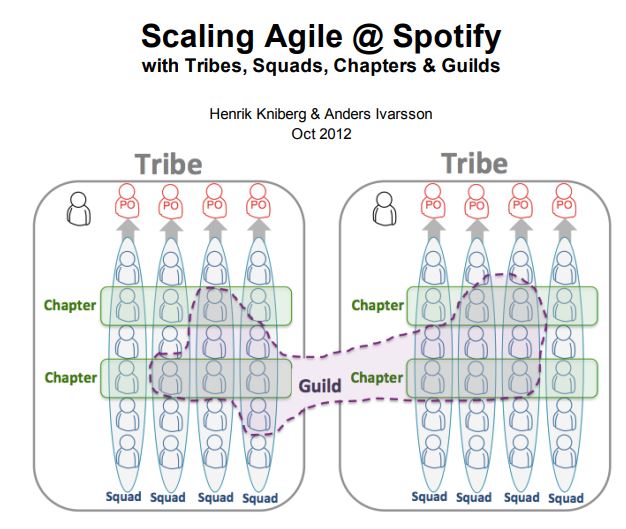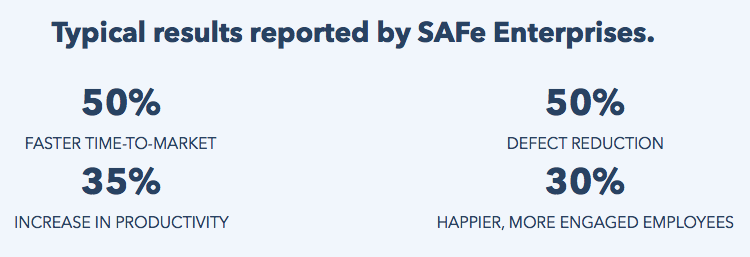Scaled Agile. What is it? Is there only one path to achieve it? Who’s using it?
When one considers the large scope of most projects undertaken by organizations at an Enterprise-scale - multiple departments, hundreds or possibly even thousands of employees - even to a casual bystander, it would seem unlikely the tenets of Agile via Scrum would be effective without some modifications. Let us introduce you to the practice of Scaled Agile and two approaches to it; Scaled Agile Framework®, or SAFe®, and the Spotify Model.
Origins and A History In Brief
Scaled Agile is an approach that at its core, regardless of the specific methodology, is a set of principles, processes, and best practices that allows larger organizations to adopt agile methodologies. This includes everything from Lean, Kanban to Scrum, accommodating the development and delivery of high-quality products and services at a faster rate.
SAFe®, or Scaled Agile Framework, had its first iteration when it was released in 2011. Its creators, Dean Leffingwell and Drew Jemilo worked to develop a methodology that differed from the project management practices of the day. The speed of change in market conditions and competition across many industries had far outpaced the capacity of those existing practices to adapt.
Similarly, the Spotify Model came into existence the following year when Henrik Kniberg and Anders Ivarsson collaborated to develop a lightweight framework working to eliminate the “silo effect” experienced by teams throughout larger organizations. In short, the Spotify Model could almost be compared to Scrum itself. It places an emphasis on the importance of culture and is implemented through Squads, Tribes, Chapters, and Guilds. The foundation of the model is the Squad and it acts essentially much like a Scrum team.
Peeling Back the Layers
In a nutshell, SAFe®, as its full name implies, relies more on a framework and very specific recommendations for implementation whereas the Spotify Model with its lighter approach typically works best when Agile coaches are involved as it can be trickier to implement. Certified SAFe® Program Consultants (SPC’s) and Release Train Engineer (RTE’s) coaches are the go-to assets for proper implementation of SAFe®.
The Spotify Model by comparison model isn’t a framework, rather it represents that organization’s view on scaling, from both a technical and cultural perspective. There is a focus more on organizing around work rather than following a specific set of practices. In traditional scaling frameworks, specific practices such as the daily standup are how the framework is implemented. However, in the Spotify model, the focus is on how the business can structure itself to enable agility. Autonomy is championed so that each team, or in their terminology, “Squad”, selects their own framework, for instance, Kanban or Scrum. Squads are further organized into Tribes and Guilds with the goals of keeping people aligned, not siloed, and allowing knowledge to be more easily shared.
Source: 
Understand, it’s not that there is a clear winner in this comparison - what may work for one organization and their existing culture, may not for another. Both SAFe® and the Spotify Model each have their own advantages and disadvantages.
Walk With Me - Let’s Talk SAFe®
The present-day version of SAFe®, version 5, was released in January 2020, and is built around the Seven Core Competencies;
- Lean-Agile Leadership
- Team and Technical Agility
- Agile Product Delivery
- Enterprise Solution Delivery
- Lean Portfolio Management
- Organizational Agility
- Continuous Learning Culture (https://www.scaledagileframework.com/about/, © Scaled Agile, Inc.)
Properly planned, SAFe® allows each organization its own unique implementation and configuration of the combined benefits of Agile, Lean, and DevOps frameworks. An organization-wide development process known as the Agile Release Train, or ART, which closely resembles the PDCA (Plan, Do, Check, Act or Adjust), sets and keeps the wheels in motion throughout the process; define, build, validate, release - repeated as needed.
SAFe® uses well-documented, specific, and repeatable processes. Agile and lean practices ensure all teams are focused on a common set of goals. Every individual understands what the deliverables are to be and as a result, the client has a clear set of expectations to be returned. There are a myriad of companies, large and small, all over the globe and across almost all industries, that have made SAFe® their standard. These include FedEx, Chevron, Nokia Software, American Express, Allianz, TV Globo, MetLife, Lockheed Martin, Bosch.
“Achieving business agility and the benefits of Lean-Agile development at scale is not a trivial effort, so SAFe® is not a trivial framework. Before realizing SAFe®’s rewards, organizations must embrace a Lean-Agile Mindset as well as understand and apply Lean-Agile principles. They must identify Value Streams and Agile Release Trains (ARTs), implement a Lean-Agile portfolio, build quality in, and establish the mechanisms for continuous value delivery and DevOps. And, of course, the culture must evolve as well.”
Source: https://www.scaledagileframework.com/implementation-roadmap/
© Scaled Agile, Inc.
More than 20,000 organizations around the world and across a wide range of industries are using SAFe®. With a combination of increases in engagement by employees and higher levels of productivity, along with decreases in time-to-market and product defects, the transition to SAFe® for the majority of organizations has been a powerful one.

“That’s A Wrap!”
With such a deep level of sophistication, detail, and simultaneous moving teams and respective activities, one would be reasonable to assume venturing into SAFe to be a substantial endeavor. While the level of complexity is indeed high, there are partners and solutions available to not only make the transition from Scrum to SAFe possible but rather, wholly successful and profitable.
In the end, both methods are designed to deliver exceptional value in a timely and efficient manner. Everyone at the organization, no matter their role or team, needs to work together under an overall umbrella of Agile methodology geared toward success. While the paths are slightly different, their destinations are the same.
SAFe® with Atlassian tools: Get to know Agile Hive now!
Would you like to know more about Agile Hive and the software-supported implementation of SAFe®? We would be happy to discuss your requirements for enterprise-wide agile product development and product management with you. Take a look at our Implementation Project documentation to see an overview of what an implementation would entail.
Get in touch with us today and let us demonstrate how it works in a personal session.


